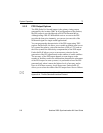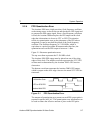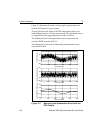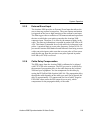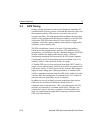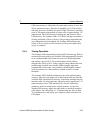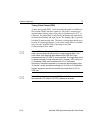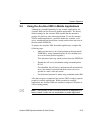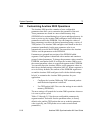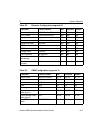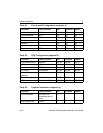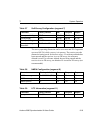
Acutime 2000 Synchronization Kit User Guide 5-13
5 System Operation
GPS time accuracy is affected by the same major source of error that
affects position accuracy: Selective Availability (S/A). The position
and time errors are related by the speed of light. Therefore, a position
error of 100 meters corresponds to a time error of approximately 333
nanoseconds. The GPS receiver's clocking rate and software affect
PPS accuracy. The Acutime 2000’s 12.5 MHz clocking rate enables a
steering resolution of 80 ns (±40 ns). Using software algorithms like
an overdetermined clock solution, the Acutime 2000 mitigates the
effects of S/A to achieve a PPS accuracy of 50 ns (one sigma) after
survey is complete.
5.4.1 Timing Operation
The Acutime 2000 automatically outputs a PPS and time tag. With an
accurate reference position, the Acutime 2000 automatically switches
to an overdetermined clock mode, activates its T-RAIM algorithm
and outputs a precise PPS. The overdetermined clock solution
mitigates the effects of S/A. Using a simple voting scheme based on
pseudo-range residuals, the Acutime 2000's integrity algorithm
automatically removes the worst satellite with the highest residual
from the solution set if that satellite’s residual is above a certain
threshold.
The Acutime 2000's default configuration provides optimal timing
accuracy. The only item under user or host control that can affect the
Acutime 2000’s absolute PPS accuracy is the delay introduced by the
interface cable. For long cable runs, this delay can be significant (1.25
nanoseconds per foot). TSIP packet 8Ex4A sets the cable delay
parameter, which is stored in non-volatile memory. For the best
absolute PPS accuracy, adjust the cable delay to match the installed
cable length. The cable delay is 1.25 nanoseconds per foot of cable.
To compensate for cable delay, use a negative offset to advance the
PPS output.




